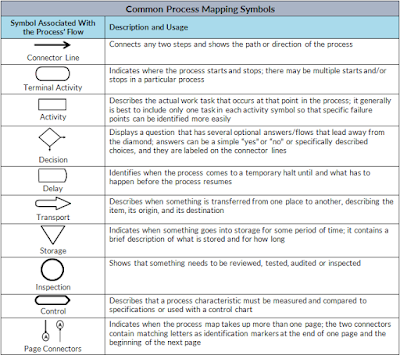PROCESS MAPPING
Process mapping is a workflow diagram that brings forth a clear understanding of a process or a number of processes. A process map is a planning and management tool that visually describes the flow of work. Process map shows a series of events that produce an end result. A process map is also known as a flowchart, process flowchart, process chart, functional flowchart, functional process chart, process model, workflow diagram, business flow diagram or process flow diagram.
The purpose of process mapping is to gain better understanding of a process and to improve efficiency. It provides insight into a process. It helps the involved people to know the process steps and brainstorm ideas for process improvement. It is a documented information that increase communication.
Process mapping involves following steps:
Step 1 - Select the process for which process mapping is to construct and determine boundaries of the process - where to start (beginning of the process) and where to end (process end).
Step 2 - List all steps involved in the process with sufficient information.
Step 3 - Sequence all steps from start to end.
Step 4 - Draw process map by using appropriate symbols.
Step 5 - Check the flowchart for completeness and include pertinent information.
Step 6 - Finalize the flowchart.
Common process mapping symbols are described in the below figure:

How you liked the write-up. Please post your comments. Thanks.
- Keshav Ram Singhal





